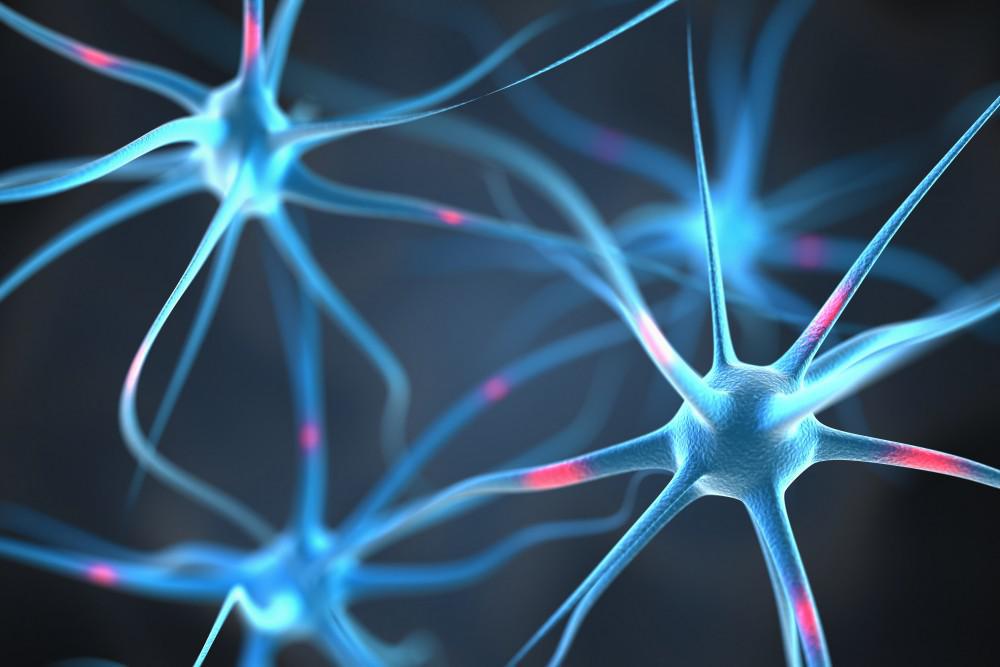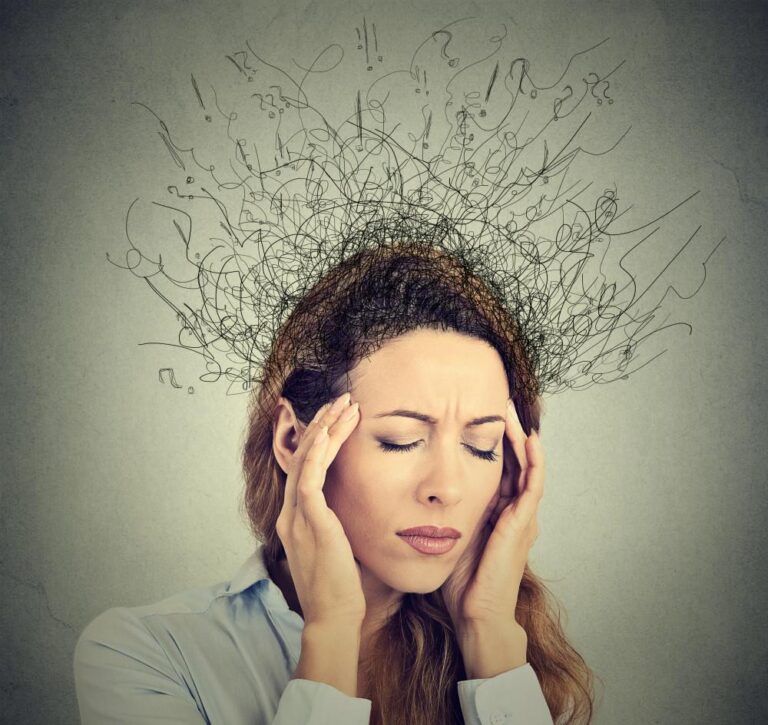WHAT IS EPILEPSY: AN OVERVIEW
Epilepsy is a chronic non-communicable neurological disorder characterized by repeated seizures and abnormal brain activities causing unusual sensations and involuntary movements in the patient, sometimes accompanied by loss of consciousness or general/partial paralysis.
The main identifier of Epilepsy is a recurrence of unprovoked seizure episodes. Seizures are usually caused by excessive electrical discharges in a group of brain cells. These spasms or surges in the neurons can be outwardly expressed as a sudden loss of attention or going blank, involuntary twitching or jerking in muscles, or even severe convulsions and fainting.
Epilepsy is not contagious and can be successfully managed in the long term. Children experiencing epileptic seizures often stop having them in their adulthood.
It is rare for patients to die from simply experiencing a seizure, but seizure episodes can expose sufferers to potentially life-threatening situations as they lose control over their actions and cognitive functions for the duration of the episode. People with Epilepsy tend to suffer from more physical problems caused by injuries from seizure episodes, as well as psychological issues like anxiety and depression.
Medical history and individual predilections of each patient are of crucial import in terms of diagnosis and treatment of Epilepsy. With proper anti-seizure medication, most people are able to live a seizure-free life.
HOW COMMON IS EPILEPSY?
One of the most misunderstood ailments in human history, Epilepsy is nonetheless a very common condition that can affect just about anyone at any age, although children and old people are the most vulnerable. It is also one of the oldest recorded ailment in human history with textual mentions dating back to 4000 BC.
According to World Health Organization, Epilepsy is the fourth most common neurological condition in the world and more than 50 million people worldwide are affected by it. In the US alone, at least 1 in 100 people have experienced unprovoked seizures in their lifetime. An estimated 2.4 million people globally are freshly diagnosed with Epilepsy each year.
Epilepsy disproportionately affects the lower to middle-income countries in the world. This has been attributed to various causes like the prevalence of endemic conditions like Malaria, higher rates of neonatal injuries and birth-related complications, higher rates of traffic or infrastructure-related injuries, variance in healthcare infrastructure and access to healthcare.
This is not to say that High-income countries are less at-risk though; WHO puts the annual new case rates of these countries at 30 to 50 per 100 000 in the general population.
Misconceptions and Prejudices
One of the biggest impediment to diagnosis and treatment of Epilepsy the world over is the fear and social stigma attached to seizures. Epilepsy was known as the ‘Sacred Disease’ in the ancient world. Seizures were thought to be occasions of supernatural possession, usually by evil spirits, and the available ‘treatments’ were squarely in the realm of religious and spiritual.
The Greek physician Hippocrates was the first to identify it as a disease of the brain, although his views were not started to be taken seriously until as late as the 18th century. In the long centuries between, Epileptic people were shunned, discriminated with, and often ostracised as practitioners of witchcraft.
While Epilepsy is now recognized as a neurological condition in modern medicine, archaic views still prevail in many cultures of the world, and even within educated and high-income populace inherited prejudices continue to work. Epileptic people face discrimination in almost every field of life including family, employment, law, and education.
DIFFERENCE BETWEEN SEIZURES AND EPILEPSY
It is easy to conflate seizures with Epilepsy since the former is one of the defining characteristics of the latter, but there are important differences between them. First of all, a seizure is a single occurrence, while Epilepsy is a chronic disorder of the central nervous system. Not everyone who experiences seizures is suffering from Epilepsy. It is recognized by the occurrence of two or more unprovoked seizures separated by at least 24 hours.
Seizures can be caused by many factors including physical and psychological trauma, stress, extremely low blood sugar level, and drug abuse. Up to 10% of people around the world are likely to experience at least one seizure in their lifetime, most of these are provoked seizures, i.e. where an identifiable trigger for the unusual neural activities is present. However, it is not easy to discern epileptic seizures from non-epileptic seizures through visible symptoms, as they often look very similar. It is advisable to contact a medical professional in case of a seizure, provoked or unprovoked.
TYPES AND SYMPTOMS OF SEIZURES
Epilepsy is the outward expression of abnormal activities in your brain, and hence the symptoms are mainly characterized by a lack of coordination among various brain functions and areas.
There are many kinds of seizures and different seizures may have different symptoms, although overlaps are common. However, a person experiencing a certain type of seizure is likely to repeat a similar pattern over time. Symptoms of seizures broadly include:
- Involuntary movement of body parts, including ranging from twitches and spasms to uncontrollable jerking in the entire body.
- A sudden loss of awareness or consciousness.
- Staring blankly and aimlessly for an extended period of time.
- Mental confusion.
- Psychic conditions like acute and irrational fear or anxiety.
Seizures can be classified into two categories: Focal and Generalized.
Focal or partial seizures
This type of seizures happen when there are abnormal activities in one particular area of the brain. Focal seizures are further divided into two types based on loss of consciousness.
- Simple Partial Seizure: Seizures that do not cause loss of consciousness. Symptoms include alteration of emotions or sensory experiences like smell, touch, taste etc. May also cause involuntary jerking in a limb or tingling, dizzying sensations in a particular body part.
- Complex Partial Seizure: Involves loss of consciousness or awareness. The patient might stare blankly to a certain point with loss of speech and movement for a period of time. Symptoms may also include repetitive odd movements like hand rubbing, swallowing, walking in circles etc.
Generalized seizures
This type of seizures happen when all the areas of the patient’s brain are simultaneously affected by abnormal cell activities. There are six types of Generalized seizures.
- Absence Seizures: blank staring into spaces and subtle movements like repeated blinking or hand twitching. Usually occurs in children; may be accompanied by temporary loss of consciousness.
- Tonic Seizures: causes the patient’s muscles to stiffen up, often causing a stumble or fall. Usually affects muscles on arms, legs, or back.
- Atonic Seizures: this is caused by a complete loss of control over one’s muscles. The body usually goes completely limp and that causes a free fall.
- Clonic Seizures: characterized by repeated jerking movement in the neck, arm, or face muscles. They often follow a rhythmic or repetitive pattern.
- Myoclonic Seizures: sudden, acute, but brief jerky movements in arms or legs.
- Tonic-clonic seizures: These are the most dangerous types of seizures, if only in terms of injury risks. It causes an abrupt loss of consciousness, stiffening of muscles, shaking and jerking. Loss of bladder control, foaming at the mouth, and biting tongue is also common in this type.
How to Identify
Seizures are unpredictable occurrences, so it can be difficult for any onlooker to gauge the onset and defining symptoms of a particular episode, especially since the sufferers themselves often do not remain in a condition to verbalize their experience.
If your seizure is not typically violent, keeping a seizure diary helps in identifying the underlying cause to a great deal. Seizures with identifiable provocations might be less dangerous, but you still need to seek medical advice. Seizures can often cause physical injuries and it is important to treat them properly as well.
Seek a medical professional or emergency care immediately if any of the following occurs:
- An episode lasts more than five minutes.
- The patient remains unconscious or doesn’t start to breathe even after seizure symptoms have ceased.
- The patient develops a high fever.
- A second seizure follows in a short interval.
- The patient is pregnant or have diabetes.
WHAT CAUSES EPILEPSY?</span
For about half the affected population, Epilepsy has no identifiable cause. For the rest of the population, there are several factors that can lead to an onset. Causes of Epilepsy also vary according to the age of onset.
- Genetic factors: Some forms of Epilepsy has been noted to run in families. This can be identified by the continuity of similar types of seizures in-between generations of patients. These are thought to be caused by genetic variations, although specific types of tests to ascertain that fully are not yet in use.
- Brain infections: Infections in the brain can lead to Epilepsy. Although the specific infection may be cured, they can change permanent changes in the structure of the brain, which may later lead to abnormalities in neural transfers, causing seizures. This can happen with AIDS, meningitis, encephalitis, and some rare forms of tuberculosis as well.
- Head trauma: Any internal or external injury or trauma (like an accident injury) in the head region has the potential to alter structures in the brain, and that can lead to epileptic conditions. Acute and excessive psychological trauma can also be a cause.
- Pre- or Neonatal problems: Problems incurred during pregnancy or right after birth can lead to Epilepsy in newborn children. Some of these are: rain malformation due to injury in pregnant mother, drug abuse in mother, lack of oxygen during birth, low levels of blood sugar, calcium, magnesium, or other electrolytes, brain haemorrhage in the baby during birth etc.
- Stroke or brain diseases: In the older population, brain stroke is one of the biggest causes of Epilepsy onset. Other degenerative diseases specific to the old age, like Alzheimer’s Disease or Dementia, are also likely to introduce changes in the brain that can lead to Epilepsy.
Risk Factors
- Age: Epilepsy is more likely to begin at childhood or old age, although the risk is present at any age.
- Family history: Having a history of seizures in the family can increase your risk of developing Epilepsy or seizure disorders, as there is a genetic predilection to this condition.
- Premature birth: Babies born prematurely have a higher risk of developing seizures due to their still under-formed brains.
- Infectious diseases: Contracting infections that can affect your brain or spinal cord increase the risk of Epilepsy.
- Stroke and vascular diseases: Diseases of the blood vessel can cause damage in your brain, which may lead to Epilepsy later in life.
What Triggers a Seizure?
There are multiple factors that may trigger a seizure, and these factors vary from person to person. However, each person is likely to have his/her own set of triggers, which can be discerned as a pattern. Although preventing Epilepsy is not always possible, identifying and avoiding triggers by making certain lifestyle changes can make managing the condition a lot easier. Triggers can include:
- Sleep deprivation and exhaustion due to lack of rest
- Dehydration and overlong gaps between meals
- Malnutrition
- Alcohol or drug abuse
- A sharp drop in blood sugar levels
- Excess consumption of specific food items, for example, caffeine
- Sudden bright light
- Psychological stress
- High fever or other illness
- Menstrual cycle or other hormonal changes in women
- Certain medications
CAN YOU DIE FROM EPILEPSY?
Epilepsy has an extremely rare chance of causing direct death or life-threatening complications. However, problems arising from seizures can frequently put sufferers and people around them into dangerous situations.
Life-Threatening
- Sudden Unexpected Death from Epilepsy (SUDEP): Epilepsy patients have a very small risk of sudden and unexpected death. The cause of this condition is still not established but is linked to respiratory conditions. About 1% of Epilepsy patients die from SUDEP. People who frequently experience tonic-clonic seizures are at a higher risk of SUDEP, so are people who are not on seizure medications.
- Status Epilepticus: This condition refers to a prolonged and relentless state of seizure. If the seizure lasts for more than five minutes or the patient experiences multiple seizures in quick succession without regaining consciousness in-between, they are experiencing status epilepticus. This can lead to permanent brain damage and even death, so immediate medical intervention is needed.
Dangerous or Potentially Harmful
- Higher risk of accidents: Seizures can cause temporary loss of control over mind and body, hence accidents are extremely likely. Patients can fall and break a bone or injure their head. The possibility of having a seizure while swimming or bathing makes Epilepsy patients 15 to 19 times more likely to drown. It also increases the risk of involvement in traffic or car accidents.
- Pregnancy complications: Seizures during pregnancy can harm both the mother and the baby due to an increased risk of injuries. On the other hand, certain anti-seizure medication can increase the risk of birth defect in babies. If an Epilepsy patient plans to become pregnant, they need to consult carefully with their doctor. Despite the risk, however, most Epileptic patients are able to get pregnant and give birth to healthy babies with proper planning and monitoring.
- Mental health issues: People with Epilepsy are more likely to develop psychological issues like Depression, Anxiety, and suicidal behaviour. The difficulty of managing the condition in their day to day life takes its toll on some, and in some cases side effect of anti-seizure medication can contribute to mood imbalance.
DIAGNOSIS OF EPILEPSY
Diagnosis of Epilepsy is complex, as it involves several factors and pinpointing the exact causes of your seizures and the appropriate treatment for it can be a lengthy process. In diagnosing Epilepsy, doctors frequently focus on a few key questions. These are:
- Are there any pre-existing or short-term conditions that may lead to seizures and can they be corrected?
- Is there any structural damage or malformation in the brain that leads to these abnormalities?
- Is the seizure an isolated event or there have been occurrences resembling this before?
To resolve these questions, a number of procedures, tests and consultations may be used.
- A thorough examination of the patient’s medical history right from childhood.
- Examination of the patient’s immediate family’s medical history.
- Blood and bodily fluids test to determine the presence of infections or genetic variations that can be associated with seizures.
- Electroencephalogram or EEG to determine and monitor any abnormalities in your brain waves
- Magnetic Resonance Imaging (MRI) and Computerized Tomography (CT) scans to get a clearer picture of your brain
TYPES OF TREATMENT
Treatment of Epilepsy generally begin with anti-seizure medications and are clubbed with lifestyle and environmental changes better suited to manage your type of seizures. If medications fail to provide relief, surgery and therapy may be used.
Medication
Epilepsy medication needs to be chosen with care and in careful accordance with the specific type/s of seizures experienced by the patient.
In most cases, a single type of anti-seizure medication is sufficient and the patient can become seizure-free. However, patients with complex or pre-existing conditions may not become seizure-free so easily and need to take a combination of drugs in order to decrease the frequency and intensity of their seizures.
Discontinuing or switching medications without consulting the doctor, or failing to follow the prescribed medication patterns can cause severe harm and damage. So extreme care and caution is recommended.
Anti-seizure medications may have some side effects ranging from mild to severe. These include:
- Fatigue
- Dizziness
- Weight gain
- Speech and coordination problems
- mild to severe skin rashes
- Problems with memory
- Depression
- Suicidal thoughts
- Inflamations in certain organs like liver and kidney
Surgery
Surgery is considered usually when anti-seizure medications fail to provide relief or control over seizures. The area of the brain that Epilepsy is originating from is removed with surgery.
Surgery is a complicated and expensive process, and can sometimes lead to further complications like permanent damage in the surrounding brain areas. It is only considered an option when:
a) The seizure is originating from a small and well-defined part of the brain
b) That particular area of the brain doesn’t interfere with or affect any vital brain functions such as memory, speech, vision, hearing or motor functions.
Alternative Therapies
Many alternative therapies are being attempted in recent times apart from and along with medications. These come with fewer side-effects, but if the condition persists medication and/or surgery may still be necessary.
Vagus nerve stimulation: In this therapy, a stimulator, similar to a heart pacemaker, is implanted under the patient’s skin and the device is attached to the vagus nerve in the neck by wires. These devices send bursts of energy to your brain through the vagus nerve and have been found to reduce seizures by 20-40% in patients.
Ketogenic diet: This is a type of diet that is high on fats and low on carbohydrates in which the body is trained to break down fats instead of carbohydrates for its daily energy needs. The ketogenic diet has been found to reduce seizures in some patients, especially children.
But the ketogenic diet should not be attempted without consultation and express prescription of your doctor since it is a difficult one for your body to adjust with. A wrongly implemented ketogenic diet can cause dehydration, constipation, nutritional deficiencies and uric acid build up in the blood which can lead to kidney stones. Hence It should only be attempted under the strict supervision of your doctor.



